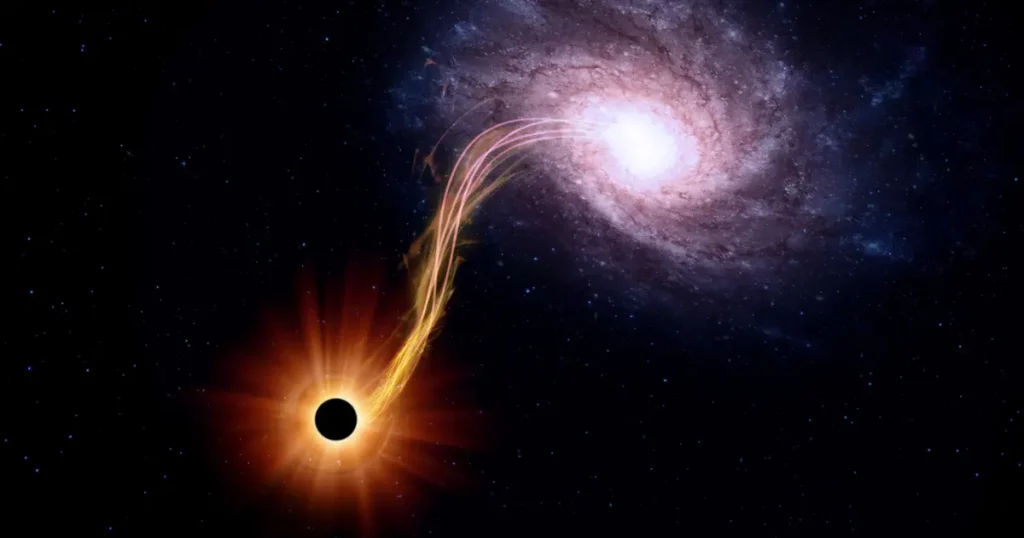
Introduction
Get ready for an incredible sight in the night sky. A rare nova explosion is about to happen in the star T Coronae Borealis, also known as the Blaze Star due to its amazing brightness. This star is located about 2,600 light-years away from the Earth. This event is sure to grab the attention of both stargazers and astronomers. So, grab your binoculars and get ready to witness this once-in-a-lifetime astronomical show.
According to the assistant research scientist specializing in nova events at NASA’s Goddard Space Flight Center in Greenbelt, Maryland:
“It’s a once-in-a-lifetime event that will create a lot of new astronomers out there, giving young people a cosmic event they can observe for themselves, ask their own questions, and collect their own data.”
Dr Rebekah Hounsell
She further added
“We’ll observe the nova event at its peak and through its decline, as the visible energy of the outburst fades, but it’s equally critical to obtain data during the early rise to eruption, so the data collected by those avid citizen scientists on the lookout now for the nova will contribute dramatically to our findings.”
Dr Rebekah Hounsell
Understanding the Phenomenon of a Nova Explosion
Nova explosions are one of the universe’s most dramatic displays, where a star that was once barely noticeable in the night sky suddenly outshines its peers. This phenomenon occurs within a binary star system, a cosmic duet comprising a white dwarf and its companion star. Over time, the white dwarf, a dense remnant of a star like our Sun, begins to siphon off material from its partner. This process is not just a mere transfer of mass; it sets the stage for a significant cosmic event.
As the white dwarf accumulates material, it does so until the conditions are right for a thermonuclear explosion. The surface of the white dwarf, now coated in a layer of hydrogen from its companion, reaches a critical pressure and temperature. It’s at this juncture that the hydrogen undergoes a rapid fusion process, releasing an immense amount of energy and propelling the star to new luminosities. This cataclysmic event is what we observe as a nova explosion.
However, it is a testament to the power of the cosmos, a brief but intense moment where the star becomes a beacon in the darkness. The nova explosion not only illuminates the night sky for observers on Earth but also serves as a critical point of study for understanding the dynamic interactions within binary star systems and the processes that fuel such spectacular outbursts. You can also check out what a famous scientist of today’s world Neil Degrass Tyson has to say about Nova Explosion in T. Corona Borealis Constellation or watch below:
The Significance of T. Coronae Borealis in Astronomy
T. Coronae Borealis holds a prestigious place in the astronomical community, not just as a beacon within the Corona Borealis constellation but as a subject of intrigue and study. As a recurrent nova, T CrB offers a rare window into the cyclic and explosive behaviors of binary star systems. Its propensity to erupt into brilliance makes it a key focus for researchers aiming to unravel the mysteries of such stellar phenomena.
Each explosion of T CrB, witnessed over centuries, has contributed valuable data that enhances our understanding of the life cycle of stars, particularly in binary configurations. The “Blaze Star” serves as a laboratory in the cosmos, providing insights into the mechanisms of mass transfer, accretion processes, and the critical conditions that lead to a thermonuclear explosion.
Furthermore, T. Coronae Borealis challenges and refines the theoretical models that astronomers use to predict nova behavior. Its recurrent nature allows for a comparative analysis of nova events, offering clues about the variability and predictability of these cosmic outbursts. In essence, T CrB is not just a spectacle in the night sky; it is a cornerstone of astrophysical research that aids in piecing together the complex puzzle of our universe’s stellar dynamics.
When and How to Observe This Spectacular Event
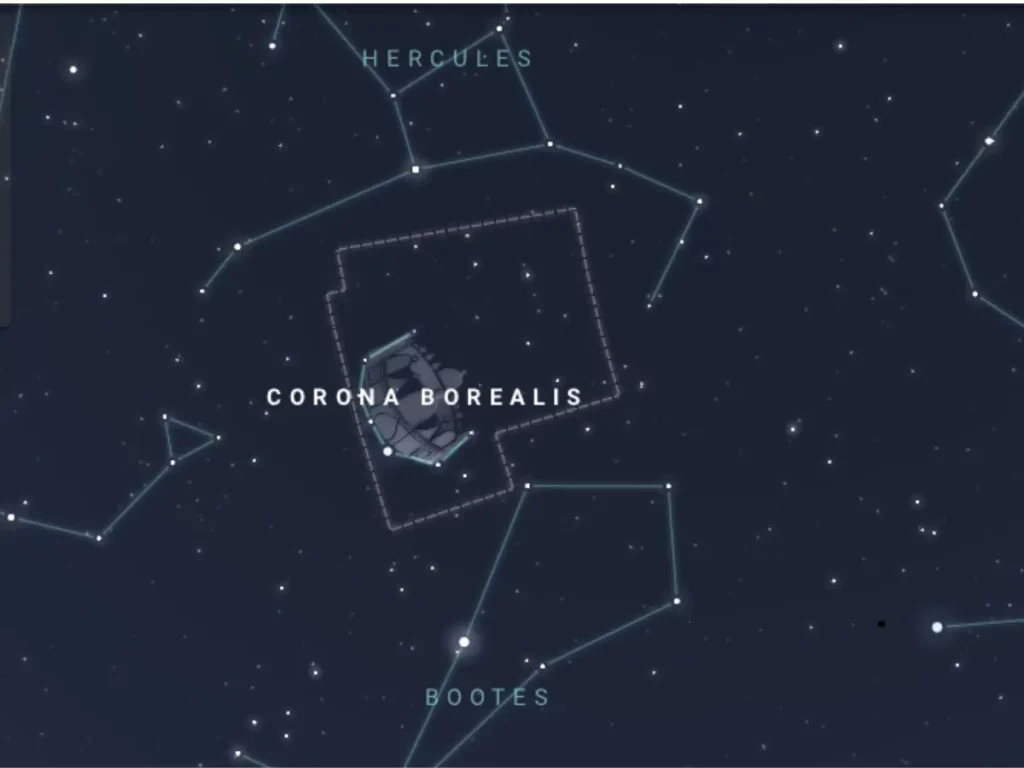
Since then, the anticipated nova explosion of T Coronae Borealis in 2024 promises an extraordinary viewing opportunity for both amateur and seasoned astronomers. The key to experiencing this celestial phenomenon lies in knowing where and when to look. Position your gaze toward the northern sky in the Corona Borealis constellation, a crown-shaped collection of stars known as the Northern Crown that hosts the “Blaze Star.”
The semicircle is situated between the Bootes and Hercules constellations. Sky watchers should look for the straight line passing through Arcturus and Vega, the brightest star in the northern hemisphere. Which will lead them to Corona Borealis.
As the event approaches, monitoring astronomical forecasts can provide precise timings, enhancing your chances of witnessing the star’s dramatic increase in brightness. Hence, experts say that one should expect it anytime between now and September.
However, for optimal observation, a clear, dark sky is your ally. Light pollution from urban areas can obscure the finer details of night sky events, so finding a spot away from city lights is crucial. A pair of binoculars or a modest telescope will significantly improve your view, bringing the unfolding drama of T. CrB’s explosion into sharper focus. These tools allow for not only a better appreciation of the nova’s brilliance, but also the observation of its nuances, changes in color, brightness, and even its position relative to surrounding stars.
Remember, this is not just about catching a glimpse of a rare astronomical event; it is about connecting with the universe in a profound way. Each observer’s experience is unique, and preparation enhances the personal connection to the cosmos during these transient moments of celestial vision.
Factors behind Periodic Nova Explosions in T. Coronae Borealis
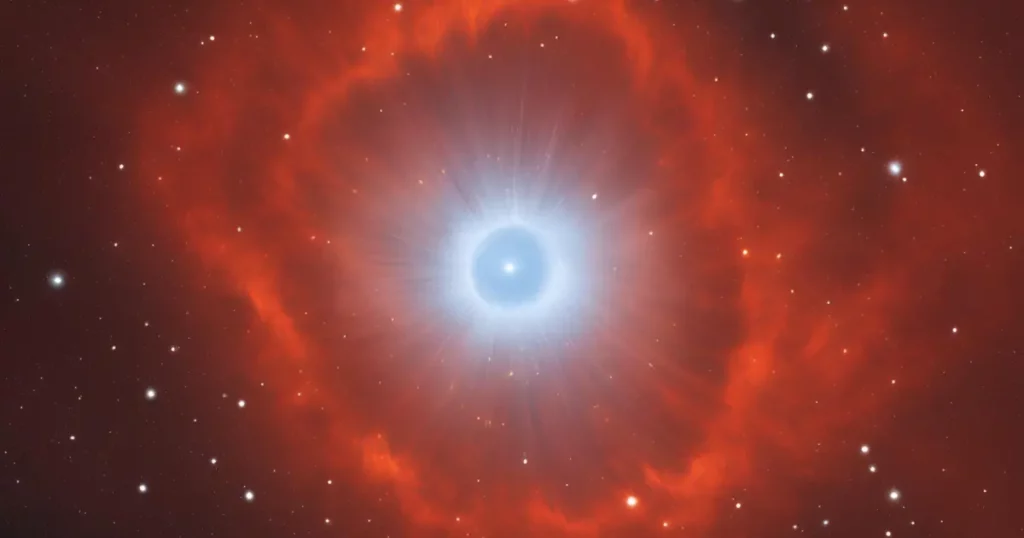
The recurring nature of nova explosions in T CrB is what makes it a recurrent nova, a rare and fascinating category of variable stars. Let’s break down the factors that contribute to this periodic behavior:
Mass Transfer: The continuous flow of hydrogen from the companion star to the white dwarf is the primary fuel for nova explosions. This steady accumulation of material is like slowly filling a cosmic powder keg.
Accretion Disk Formation: As the red giant loses mass, it forms an accretion disk around the white dwarf. The rate at which matter accumulates on the white dwarf’s surface depends on the accretion disk’s dynamics. Variations in the accretion rate can influence the time between nova eruptions.
Critical Mass: As the hydrogen layer on the white dwarf’s surface grows, it reaches a critical mass. This critical mass is crucial for initiating the nova explosion.
As the white dwarf’s mass approaches the Chandrasekhar limit (the maximum mass a white dwarf can sustain before collapsing into a supernova), the conditions for a nova eruption become more favorable. However, it’s important to note that not every white dwarf reaching the Chandrasekhar limit undergoes a supernova.
Temperature and Pressure: The increasing mass of hydrogen leads to a rise in temperature and pressure at the base of the accumulated layer. When these conditions reach a critical threshold, they set the stage for a thermonuclear reaction.
Thermonuclear Runaway: Once the temperature and pressure are high enough, a thermonuclear explosion occurs. This rapid fusion of hydrogen releases an enormous amount of energy, causing the dramatic increase in brightness we observe as a nova. The nova outburst itself is an explosive event.
Material Ejection: The explosion ejects a portion of the accumulated material into space, temporarily reducing the mass on the white dwarf’s surface.
Magnetic Fields: The presence of strong magnetic fields on the white dwarf can have an impact on the accretion process and the distribution of accreted matter. This can affect the timing and intensity of nova eruptions.
Cycle Reset: After the explosion, the process begins anew. The white dwarf starts accumulating material again, setting the stage for the next nova explosion.
The interplay of these factors creates the roughly 80-year cycle observed in T. coronae borealis. This predictable pattern allows astronomers to anticipate and prepare for each spectacular increase in T CrB brightness.
Observing Nova: Tools of the Trade
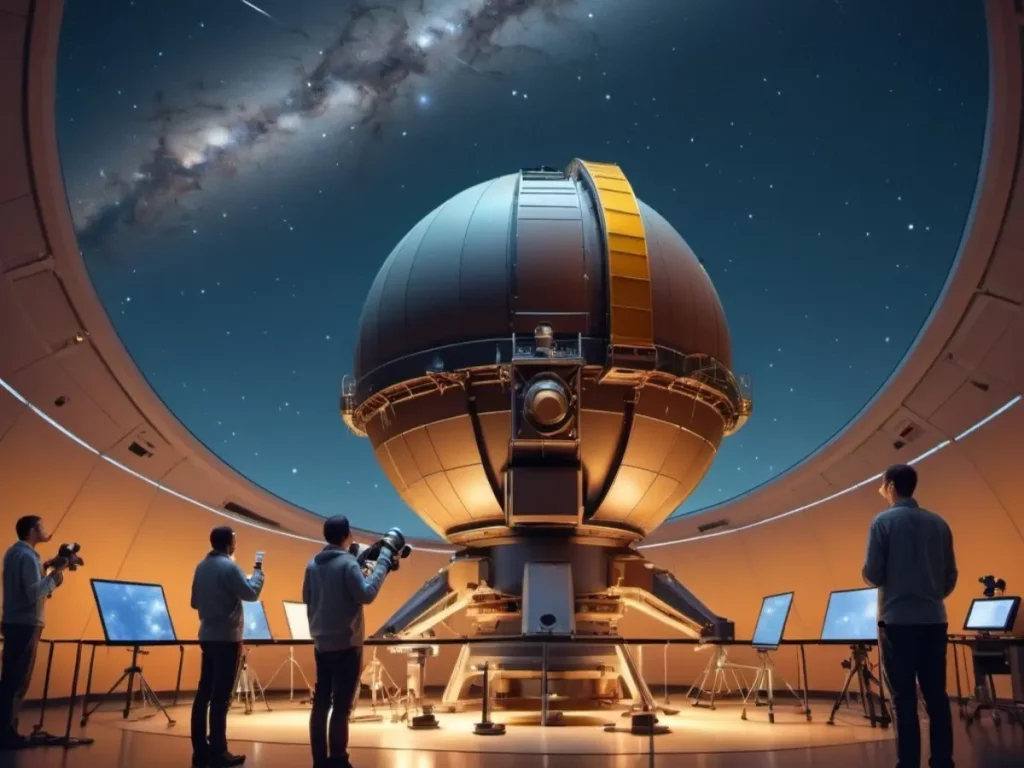
To understand T CrB and its periodic behavior, astronomers employ a combination of observational techniques and theoretical models:
Optical Telescopes: From small amateur telescopes to large professional observatories, optical telescopes are the primary tools for observing T CrB. They allow us to track the star’s brightness changes and capture detailed images of the nova event.
Spectroscopes: These devices break down the light from T CrB into its component wavelengths, revealing crucial information about the star’s temperature, composition, and the speed of ejected material during the nova explosion.
CCD Cameras: Charge-coupled device (CCD) cameras attached to telescopes provide high-sensitivity digital imaging, allowing astronomers to detect even subtle changes in T CrB’s brightness.
Photometers: These instruments precisely measure the amount of light coming from T CrB, helping create detailed light curves that track the star’s brightness over time.
Polarimetry: Measuring the polarization of light from T CrB to study the presence and geometry of magnetic fields.
Radio and X-ray observations: Examining T CrB at different wavelengths to study the system’s behavior during and between outbursts.
Radio Telescopes: While not as commonly used for nova observations, radio telescopes can provide valuable data on the ejected material as it interacts with the surrounding space.
Space-based Observatories: Satellites like the Hubble Space Telescope and the upcoming James Webb Space Telescope offer unparalleled views of celestial events, free from the distortions of Earth’s atmosphere.
For amateur astronomers looking to join the hunt, a good pair of binoculars or a small telescope is often enough to spot T. CrB in the Corona Borealis constellation. The key is to familiarize yourself with the star’s location and monitor it regularly for any signs of brightening.
Moreover, the synergy between human curiosity and technological innovation not only propels our understanding of phenomena like T. Coronae Borealis’s nova explosion forward but also democratizes the wonder of astronomy, inviting all who wish to partake in revealing the universe’s most captivating stories.
Models and Predictions: The Science of Forecasting Nova Explosions
Predicting when T Coronae Borealis will unleash its next nova explosion is a complex task that combines observational data with sophisticated astrophysical models. Here’s a look at some of the approaches used:
Historical Light Curves: By studying the light curve of T CrB from previous explosions, astronomers can identify patterns and potentially predict future outbursts. The roughly 80-year cycle observed in T CrB provides a general timeframe for expectations.
Accretion Rate Models: Scientists develop models that estimate how quickly the white dwarf is accumulating material from its companion. These models aid in forecasting the potential reach of the critical mass for a nova explosion.
Thermonuclear Reaction Simulations: Computer simulations of the conditions on the white dwarf’s surface help scientists understand when and how a thermonuclear runaway might occur.
Hydrodynamic simulations: Modeling the accretion process, the structure of the accretion disk, and the thermonuclear runaway that leads to the nova eruption.
Stellar evolution models: Studying the evolution of the binary system, including the mass transfer rate and the changes in the white dwarf’s properties.
Magnetic field models: Investigating the role of magnetic fields in the accretion process and the nova outburst.
Binary System Dynamics: Models of how the two stars in the T CrB system interact over time can provide insights into the mass transfer process and potential triggers for nova events.
These models, combined with ongoing observations, allow astronomers to refine their predictions and prepare for the next grand performance of the Blaze Star. Hence, by meticulously charting its light curve and analyzing its spectral features, scientists can harness a wealth of data that brings the inner workings of such stellar explosions into sharper focus. Astrophysicists’ complex models and the world’s most sophisticated telescopes have developed a symbiotic relationship due to this relentless pursuit.
Furthermore, the continuous refinement of these models with each successive outburst of T CrB plays a pivotal role in predicting the timing of the next grand explosion. However, they also serve to illuminate the underlying processes that trigger these spectacular events, offering a clearer understanding of the star’s behavior and its cycle of rebirth.
In essence, the fusion of observational data with theoretical insights not only enhances our grasp of T. Coronae Borealis’s unique character but also enriches the broader field of astrophysics, pushing the boundaries of what we know about the universe’s stellar inhabitants.
The Nova Explosion: A Cosmic Fireworks Display
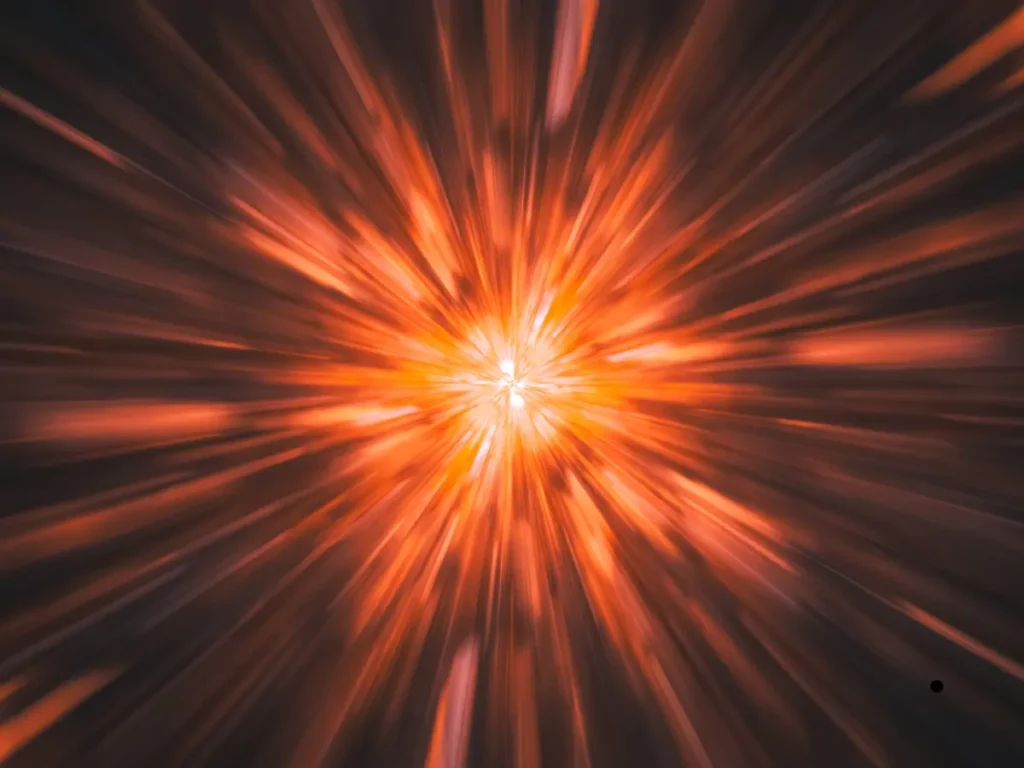
When T. Coronae Borealis finally erupts, it is truly a sight to witness. The normally faint star can brighten by several magnitudes, becoming visible to the naked eye even in light-polluted areas. This dramatic T CrB brightness increase is what gave the star its “Blaze Star” moniker.
During the peak of the nova explosion, several remarkable things happen:
Rapid Brightening: Over a period of just hours or days, T CrB can increase in brightness from magnitude 10.2 to magnitude 2, eventually becoming visible to the naked eye. Hence, it will remain visible for about a week.
Color Changes: As the explosion progresses, observers may notice changes in the star’s color, reflecting the eruption’s changing temperature.
Ejection of Material: While not visible to the naked eye, sensitive instruments can detect the shell of material ejected by the nova explosion as it expands into space.
Spectral Evolution: The T CrB light spectrum changes dramatically during the explosion, providing astronomers with a wealth of information about the physical processes at work.
Gradual Fading: After reaching peak brightness, T CrB slowly fades back to its normal state over a period of weeks or months.
You can also watch a short reel on T. Coronae Borealis or watch below:
Nova vs Supernova: Understanding Stellar Explosions
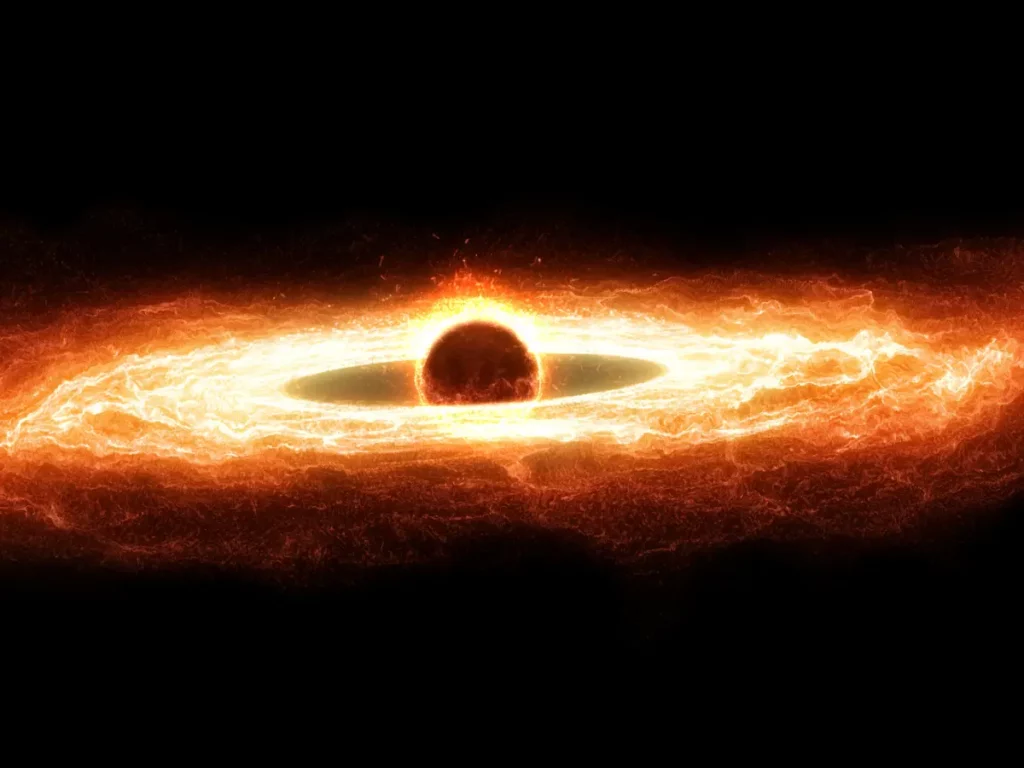
While both novae and supernovae involve stellar explosions, they are quite different phenomena. A nova vs supernova comparison reveals some key distinctions:
Star Survival: In a nova like T CrB, the white dwarf survives the explosion and can repeat the process. A supernova, however, typically results in the complete destruction of the star.
Energy Release: Nova explosions release far less energy than supernovae. While impressive, the energy from a nova is just a tiny fraction of what a supernova unleashes.
Frequency: Novae are much more common than supernovae. In our galaxy, we might see several novae per year, while supernovae in the Milky Way are rare events occurring perhaps once per century.
Element Production: Supernovae play a crucial role in creating and distributing heavy elements throughout the universe. Novae, while they do release some material into space, have a much smaller impact on galactic chemistry.
Understanding these differences helps put the upcoming explosion of T Coronae Borealis into perspective. While not as catastrophic as a supernova, it’s still a remarkable and scientifically valuable event.
T Coronae Borealis through Time: A Star’s History
The T Coronae Borealis History is a fascinating chronicle of astronomical discovery and ongoing research.
The man named Burchard, abbot of Ursberg, Germany, first witnessed it some 800 years ago, in autumn 1217.
NASA
However, T CrB caught the attention of astronomers with its dramatic outbursts. Astronomers first documented the event in 1866, and it last transpired in 1946.
The Broader Impact of Nova Explosions on Science
These historical observations have since provided invaluable data for understanding the nature of recurrent novae. By comparing the light curves and spectral data from past events, astronomers have been able to refine their models of nova explosions and improve their predictions for future outbursts.
The study of T CrB’s history also highlights the advances in astronomical technology and techniques over the years. We have progressed from visual observations and photographic plates to contemporary digital imaging and spectroscopy. We have made significant progress in our understanding of this mysterious star.
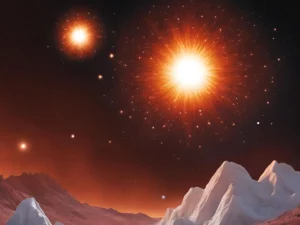
As a result, this investigation sheds light on the materials that make up celestial bodies and even life itself, emphasizing the interconnectedness of the cosmos. Furthermore, the data harvested from nova explosions enhances our comprehension of the universe’s dynamic processes, providing a clearer picture of the cosmic lifecycle from birth to rebirth.
These discoveries’ ripple effects echo through various branches of science, enriching our collective understanding and pushing the boundaries of human knowledge ever further. As a result, investigating nova explosions not only satisfies our inherent curiosity about the stars, but also strengthens the foundation of astrophysics, enabling us to understand the broader aspect of the unknown with increased precision and wonder.
Conclusion
Through ongoing study of stars like T Coronae Borealis and their potential for nova explosions, scientists hope to gain deeper insight into how the universe operates on both small and large scales. Observing a nova explosion firsthand through telescopes or observatories provides an unparalleled opportunity to witness the powerful forces at work throughout our galaxy and beyond.
The impact of nova explosions on scientific discovery goes beyond astronomy, with insights gained from these phenomena often extending to other areas of study such as nuclear physics and materials science. Scientists still struggle to fully understand the factors that trigger periodic nova explosions, and further research is necessary to unravel this mystery. While astronomical events have long fascinated humans, modern technology allows us to better observe, understand, and appreciate these cosmic occurrences.
T Coronae Borealis, or Blaze Star, is a key subject for study in astronomy due to its potential for repeated nova explosions. The occurrence of nova explosions emphasizes the ongoing changes in our universe and the importance of constant observation and research.
Here is another good read: Brain-Computer Interface: Neuralink is Bridging Brains and Bytes
Citations
[1] https://www.nasa.gov/centers-and-facilities/marshall/nasa-global-astronomers-await-rare-nova-explosion/
[2]https://www.pitt.edu/pittwire/features-articles/corona-borealis-nova-explosion
[3]https://www.sciencenews.org/article/stellar-explosion-nova-new-star-summer
[4]https://indianexpress.com/article/technology/science/t-coronea-borealis-nova-explosion-rare-nova-nasa-9506281/
[5] https://theconversation.com/look-up-a-once-in-a-lifetime-explosion-is-about-to-create-a-new-star-in-the-sky-233884
[6]https://www.bbc.com/future/article/20240322-visible-nova-explosion-is-coming
[7]https://www.livescience.com/space/astronomy/once-in-a-lifetime-nova-explosion-from-t-coronae-borealis-will-create-a-new-star-in-the-sky
[8]https://academic.oup.com/mnras/article/287/3/634/1067915
[9] https://arxiv.org/pdf/2308.13668.pdf
[10]https://abcnews.go.com/Technology/earth-naked-eye-view-star-system-exploding-3000/story?id=112397736
[11] https://www.space.com/the-universe/stars/once-in-a-lifetime-star-explosion-visible-from-earth-could-happen-any-day-now


